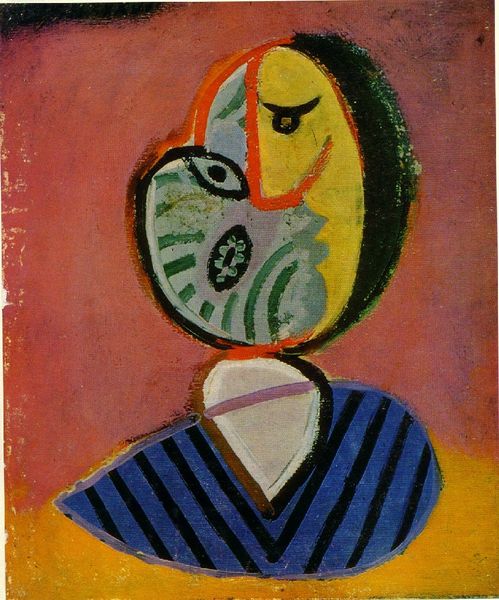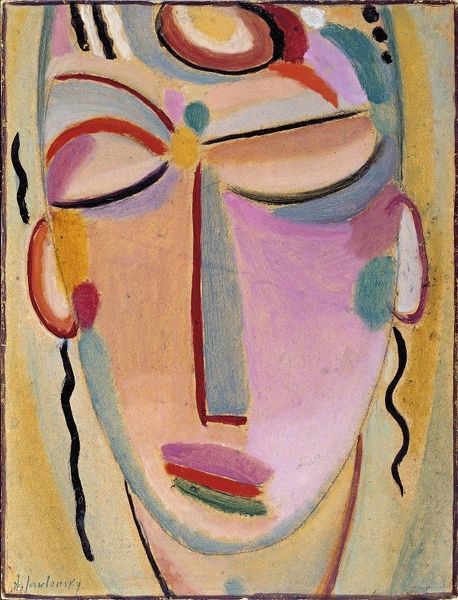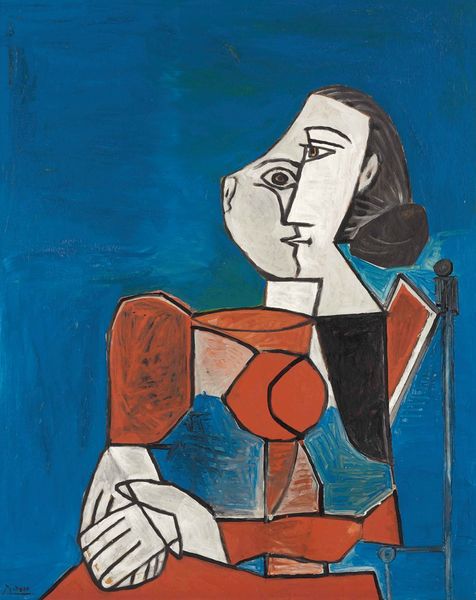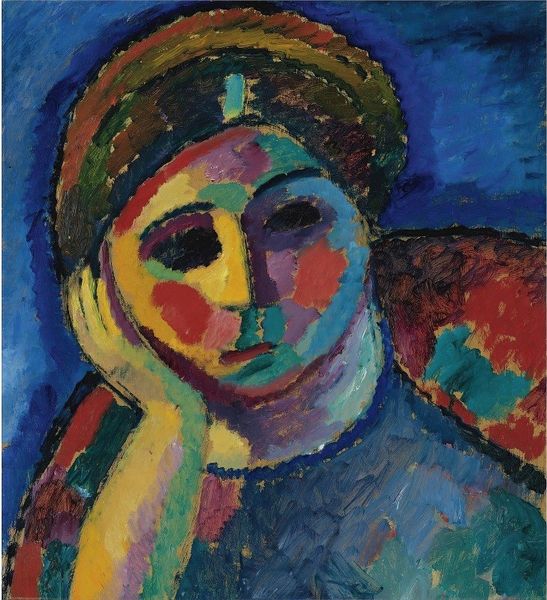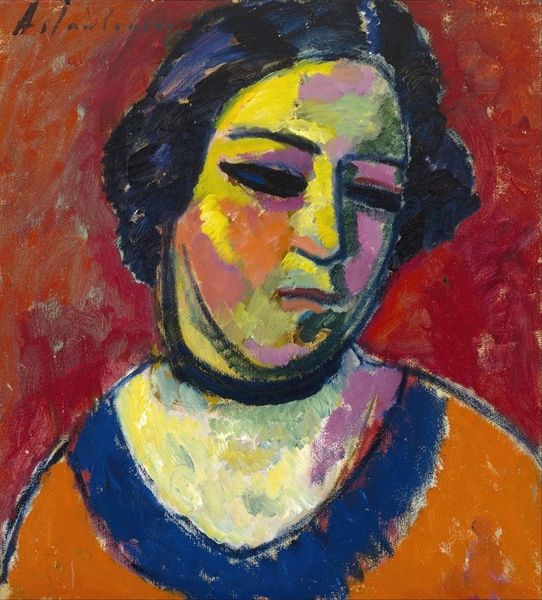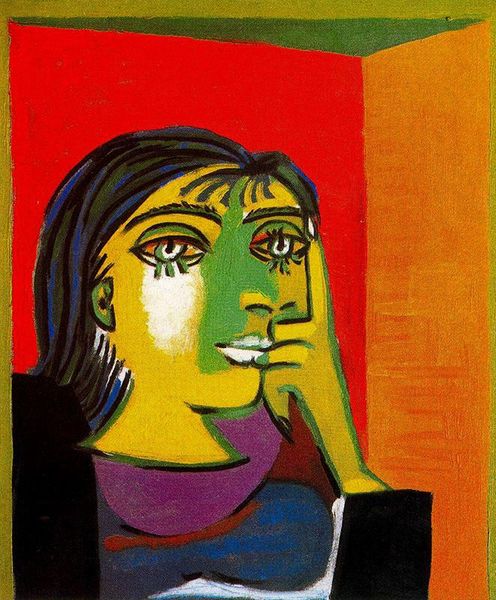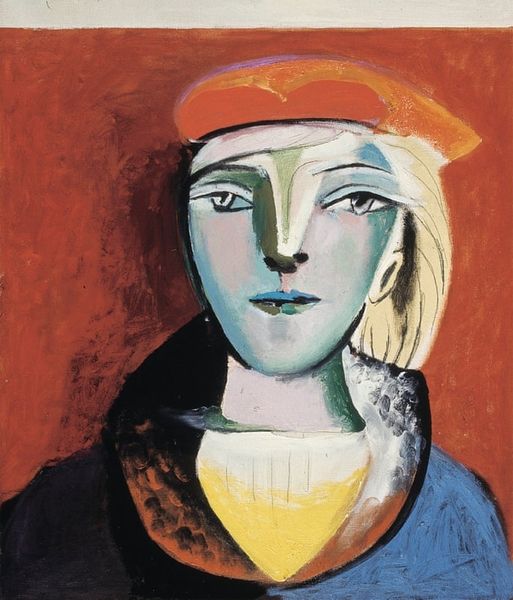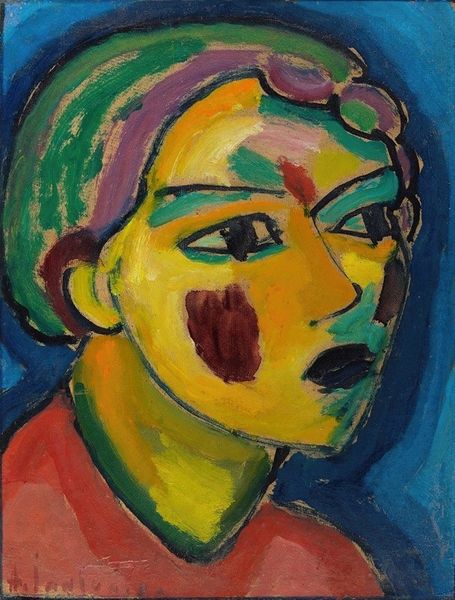
Dimensions: 55 x 46 cm
Copyright: Pablo Picasso,Fair Use
Curator: Let's take a closer look at Pablo Picasso’s "Woman by the Window," painted on August 13, 1936. It's a fascinating example of his portraiture during a particularly tumultuous time in Europe. Editor: Immediately, what strikes me are the materials, the apparent simplicity of the medium belying the complexities within. It's oil paint, likely applied in layers, but achieving a flat, almost industrial aesthetic. There's a tangible tension in that contradiction. Curator: Precisely. Considering the historical context, this painting emerges from a period deeply influenced by the rise of fascism and the Spanish Civil War's looming shadow. The fracturing of the face and the disjointed perspective reflect the anxieties and uncertainties of the era. It embodies a kind of resistant modernism against the period's dominant reactionary trends. Editor: I’m interested in how the means of production itself might mirror that fracturing. Picasso was not just depicting discord, he was actively engaging in it through his technique. Look at the deliberate, almost careless application of paint in certain areas. Is he rejecting traditional methods as a critique of societal order? Curator: Absolutely. Picasso challenged established artistic conventions to destabilize the viewer’s perception, a deliberate political act of rebellion. The distorted features, rendered in bold, contrasting colours, might speak to the multifaceted and often conflicting identities of women, especially within such turbulent socio-political times. We can also consider it in light of his personal life—his relationships were fraught, to say the least. Editor: I agree, the layering suggests an internal battle represented physically through the application of the paint. I see a dialogue happening here—between representation and abstraction, control and chaos—mirroring the materials and tools used. It highlights the artist’s process and perhaps questions the labor and intention behind such iconic artwork. Curator: The composition forces us to confront not only the woman's fragmented identity, but also our own roles in constructing narratives around her image and the era she inhabits. It calls for a more nuanced understanding that extends beyond the canvas. Editor: This deep dive only strengthens my view of art as more than just visual experience, but also as a byproduct of social and historical materiality. The woman by the window seems less an observation of an individual and more of the representation of a whole era of conflicts that were translated through tools into visual context.
Comments
No comments
Be the first to comment and join the conversation on the ultimate creative platform.
